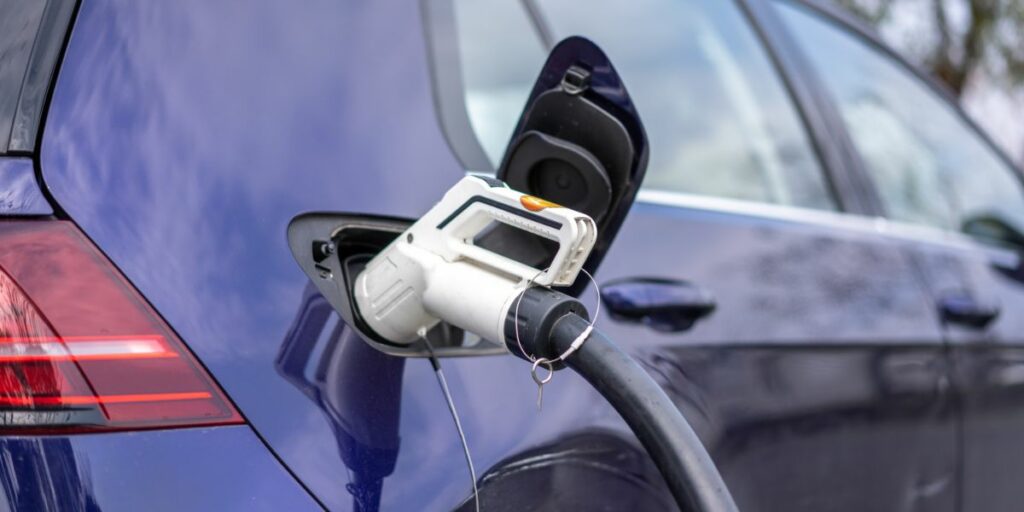If you’re in the market for a new or used car, doing research is a critical step in your decision-making process. First, it’s important to review car buying guides to understand the different elements you may want to consider. For some, your top concerns may be fuel costs and carbon emissions, which is why an electric vehicle and hybrid are both great options for you. They’re also popular among teens these days – Gen Z is the most eco-conscious generation after all – and make for a great first car for teenage drivers.
However, there is more than one type of EV, and each one comes with its own set of pros and cons. This guide lets you in on the biggest differences between electric cars, hybrids, and plug-in hybrid cars.
Understanding Electric Cars
An electric vehicle or an EV is any vehicle with an electric motor in place of an internal combustion engine. The motor is powered by a large battery pack that can be charged to a plug-in wall outlet or electric vehicle supply equipment (EVSE). Charging time varies depending on the vehicle’s charger capacity and the power source, but it can take anywhere between 30 minutes to 10 hours.
Why Do People Buy Electric Vehicles?
- To Reduce their Carbon Footprint: Auto emissions make up about a third of all air pollution in the US. And with growing concerns about the rate at which the planet is warming, it makes sense for car users to want to find a cleaner, more sustainable mode of transportation. Moreover, because EVs require no fuel, they produce no carbon emissions whatsoever.
- To Save on Fuel and Maintenance Costs: EVs run purely on electricity. Thus, EV users never have to pay for fuel again. And because they have fewer moving parts, EVs also require less maintenance than their fuel-powered counterparts.
- For Tax Credits and Incentives: The Department of Energy states that all EVs and plug-in hybrid cars bought brand new in or after 2010 may be eligible for a federal income tax credit of up to $7,500. The final amount will depend on the vehicle’s battery capacity.
- For a Smoother and Quieter Ride: While this may not be the number one reason people buy EVs, it’s a great bonus to have. Most EVs are typically quieter, easier to handle, and more comfortable to ride in compared to fuel-powered vehicles.
What are the Disadvantages of Driving an Electric Vehicle?
- Higher upfront cost: As mentioned, EVs are practical because they require no fuel to run and have fewer moving parts to maintain. However, electric cars usually cost more than fuel-powered vehicles upfront as their batteries are pretty expensive to produce.
- Short-range: Most electric cars can go 60 to 100 miles when fully charged. This just doesn’t compare to fuel-powered vehicles, which can sometimes reach up to 400 miles on a full tank.
- Slow recharging time: Fueling up at a gas station can take as little as five minutes. Fully charging an EV, on the other hand, can take two to 12 hours tops. Of course, most EV users will charge their cars overnight – but let’s face it, not everyone has the presence of mind to remember to charge every night.
- Charging stations aren’t as ubiquitous as gas stations: At least, not yet. Bigger, more populous cities may be experiencing a boom in charging stations these days. But smaller cities and towns have been slow to keep up. As more and more people get into EVs, this will change. But for now, going on a road trip with an EV is a bit of a gamble.
What are Hybrid Cars?

By definition, a “hybrid” is something you get when you combine two or more different species or methods. Hybrid vehicles run on a combination of an internal combustion engine and an electric motor. However, unlike EVs and plug-in hybrids, standard hybrids cannot be plugged in for charging.
Instead, during braking, the electric motor works as a generator. The energy gained from that is then used to run a small battery that helps power auxiliary loads and minimize engine idling. The electric motor doesn’t exist to power the vehicle but to make the engine work less and save the driver fuel.
Hybrid Cars: Pros and Cons
Pros
- Hybrids are more fuel-efficient than gasoline- and diesel-powered cars.
- They’re more affordable than full EVs and plug-in hybrids.
- They use up less gasoline and thus produce fewer emissions than regular vehicles.
Cons
- Because hybrids recapture energy during braking, they don’t get better mileage than their counterparts during continuous highway driving/
- Hybrids usually have a smaller engine than fuel-powered vehicles and thus don’t get the same amount of power, speed, and acceleration as their traditional counterparts.
- Despite being more affordable than EVs and plug-in hybrids, they still cost more upfront than fuel-powered cars. In addition, battery replacement can also be expensive.
What are Plug-In Hybrid Vehicles?

Like hybrids, plug-in hybrid electric vehicles (PHEV) run on a combination of internal combustion engines and electric motors. The fuel-powered engine can charge the electric motor’s batteries through regenerative braking. However, PHEV batteries can also be charged by plugging into a 120-volt wall socket or a 240-volt EVSE, much like a full EV. Charging can take anywhere between two to six hours.
Generally, PHEVs will run mainly on electric power until the battery shuts off – at which point the internal combustion engine will take over. Most plug-in hybrid vehicles can go up to 25 miles or more on electric power alone. For example, the BMW i3 can go up to 126 miles.
Plug-In Hybrid Cars: Pros and Cons
Pros
- PHEVs are more fuel-efficient than standard hybrids and can function essentially like an EV for short commutes.
- Unlike full EVs, PHEVs don’t have to be plugged in and can keep running as a hybrid so long as there is gas in the tank.
- PHEVs can save you money in the long run, as you’ll use less gasoline than you would with a gas-powered or standard hybrid car.
- Like full hybrids and EVs, PHEVs minimize your carbon emissions.
Cons
- Because they require larger batteries and have more moving parts than standard hybrids, PHEVs tend to be more expensive upfront.
- The short electric driving range means it doesn’t allow for full electric trips beyond 25 miles.
- If you want to make the most of its electric motor, you’ll have to keep plugging it in to charge.
Plug-in Hybrid Vs Hybrid Cars: A Side-by-Side Comparison

| Hybrid | Plug-in Hybrid | |
| How they work | Standard hybrids are powered by a combination of an internal combustion engine and an electric motor. The motor runs on a 12-volt battery pack that recharges typically during braking and coasting. The electric motor assists the fuel-powered engine during stop-and-go traffic and light acceleration. | Plug-in hybrids work similarly but come with a larger battery pack that can be plugged into a wall outlet or charging device. When charged, the electric motor can power the vehicle on its own for a limited number of miles. |
| Electric range | Traditional hybrids cannot travel long distances in electric mode, as they are not built for fully electric driving. The battery pack can only assist the engine over short periods. | Standard plug-in hybrids can reach anywhere between 10 to 120 miles in electric mode alone. |
| Charging | Hybrid batteries are self-charging, storing energy from braking and coasting. | Plug-in hybrids work in the same way but come with the added benefit of charging via a 120v wall outlet or 240v EVSE. Typically, plug-in hybrids will take two to six hours to charge. |
| Fuel consumption | Fuel economy depends on a variety of factors, including make and model. For example, a 2021 Toyota Prius has an annual fuel cost of $900 and, on average, saves $4,250 in fuel costs over five years. | The 2021 Prius Prime – the plug-in hybrid version of the Prius – has an annual fuel and electricity cost of $600 and saves $5,500 in fuel costs over five years. |
| Affordability | Hybrids are typically more expensive than cars that run solely on an internal combustion engine. However, they are usually cheaper than plug-in hybrids and fully electric vehicles. For example, the 2022 Toyota Prius goes for $24,000 to $32,000. | Plug-ins hybrids are more expensive than standard hybrids because they have larger battery packs and can go for longer distances on electric mode alone. The 2022 Prius Prime goes for $28,000 to $34,000. |
The Bottom Line
The decision of whether to buy a hybrid or plug-in hybrid vehicle is not an easy one. In this blog post, we’ve explored some pros and cons of each option to help you make the best choice for your lifestyle. We hope that our comparisons have been helpful!
